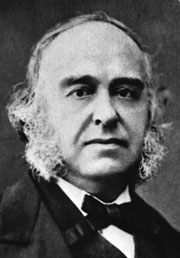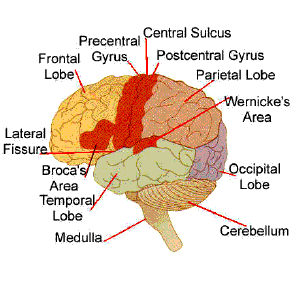Paul Broca
From Psy3242
Life of Paul Broca
Pierre Paul Broca (June 28, 1824 -- July 9, 1880) was a French physician, anatomist, and anthropologist. He was born in Sainte-Foy-la-Grande, France.
Broca advanced the science of cranial anthropometry by developing many new types of measuring instruments (craniometers) and numerical indices. The uses that reputable scientists, including racist ones, made of Broca's measurements and conclusions have been analyzed by Stephen Jay Gould in The Mismeasure of Man (1981) and by his biographer, Francis Schiller. Broca's work is also featured in Carl Sagan's book Broca's Brain.
Early on in life in his native France, at the tender age of 17 he started his monumental life as a prosector and he eventually became Secretary of the Society-Anatomique. As a neurological clinician but also as a researcher, he wrote effusively- well over 500 presentations (none ever considered mediocre). A classic 900 page monograph on aneurysms came forth from his gifted pen and he even experimented with hypnotism on a series of surgical cases. Even with considerably opposition, he helped introduce the microscope in the diagnosis of cancer. But he is best known amongst so many other accomplishments for his contribution to neurology the concept of functional localization by cerebral convolution. And with his aged father looking on with silent admiration in a memorable meeting in 1862 he demonstrated the brain lesion of his first patient who had suffered from aphémie(renamed aphasia later by Armand Trousseau (1801-1867)). From this presentation and from other ongoing observations he concluded that the integrity of the left frontal convolution was responsible and necessary for articular speech (David Ferrier 1843-1928) is responsible for naming this region "Broca's convolution- the motor speech area."
Paul Broca's Patient Tan
Paul Broca's patient was Monsieur LeBorgne. Tan. Tan was only able to say the word "Tan." He is also responsible for the study of Aphasia known as Broca's aphasia. In a patient with Broca's aphasia, words like "in" "and" "but" "above" "about" and "so on" are often omitted. There is also telegraphic speech. There are difficulties in language production (especially of novel utterances). May be able to use well practiced expressions without obvious difficulty and may be able to sing well-known songs. Broca's area is located in the left frontal lobe just forward from the primary motor cortex on the posterior surface of the 3rd frontal gyrus, encompassing Brodman's 44 and part of area 6. Non-fluent speech but articulation is good. Speech is often slow, deliberate and requires much effort, and may have only a very simple grammatical structure. When PET is used to examine resting brain function, patients with Broca's aphasia show underactivation in left frontal regions.
Broca's Aphasia=
Paul Broca discovered that speech was impaired following damage to the posterior portion of the third convolution of the left frontal lobe(often called Broca's area). Broca's aphasia is known as expressive, nonfluent, or motor aphasia. The degree of speech loss highly correlates to the degree of oral apraxia. Apraxia refers to a difficulty miming or performing learned motor skills on command. Patients severely affected with oral apraxia may be unable to poke their tongue out or whistle on verbal command or in imitation of the examiner. Tan was found at postmortem to have a lesion of the third frontal gyrus. The right hand is often paralyzed because the lesion that causes Broca's aphasia may also encroach on the motor strip for the hand. The major feature of Broca's aphasia is severe nonfluency of speech, which may be extreme to render the patient mute. Speech is often limited to a few stereotyped expressions and expletives. Often the comprehension of numbers and symbols is also impaired. Their non-verbal memory is good; they have no difficulty recognizing doctors and other caregivers and they can follow a simple schedule. They are also emotionally fragile and easily angered or brought to tears.


